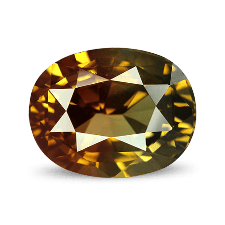Alexandrite Stone is one of the unique kinds of gemstone in the whole gem world. Renowned for displaying an incredible transformation in the color, Alexandrite gemstone is said to be an emerald in the day while a ruby in the night.
Alexandrite is a very special variety of chrysoberyl stone. Alexandrite stone is famous for its remarkable ability to change color and display one of the most remarkable color changes in the gem world — appearing as green in sunlight and turning red-purple in incandescent light. But being so rare and expensive it is rarely seen as a natural alexandrite.

Alexandrite crystal primarily drives two assortments. This exceptional variety of gemstone arena is known for exhibiting a sharp change in its color tone from just 5 to even 100 percent. Alexandrite is driven from other places brazil and russia, so alexandrite is called brazilian alexandrite, russian alexandrite In other simple words, it displays a gorgeous greenish-blue hue in the day’s sunlight whereas it is of lovely red or purplish to brownish shade in an incandescent or artificial yellow light.
The member of the gem-quality Chrysoberyl mineral family, Alexandrite, is a June birthstone gem, worn especially under the Cancer Zodiac sign. Virgo, Leo, Gemini, and Taurus sign owners can also opt for an Alexandrite gem piece. It is regarded as the best gift for the 55th wedding anniversary.
Although Alexandrite is considered as a modern-age gemstone, it is highly popular among gemstone collectors and jewelry lovers. It is astrologically one of the most relevant gemstones. On the metaphysical ground, natural Alexandrite holds exorbitantly healing powers and is hence majorly worn for soothing purposes, other than making an excellent jewelry stone. Owing to its high durability (Mohs Scale Hardness of 8.5) and fascinating color-changing effect, Alexandrite is highly preferred for making statement jewelry collections. Besides several serious medical healings like treating nervous disorders, Alexandrite is known for boosting creativity, intellectual powers, and promoting professional success.
Clarity: Although it contains a few inclusions. The value of clean material with good colour change and powerful hues has increased dramatically. A high clarity rating increases the value of this particular one with a beautiful colour transition, such as this green-to-red-purple example. When certain types of long, thin inclusions are positioned parallel to each other, they can produce a phenomenon known as chatoyancy, or the cat's-eye effect, which raises the value of the gem. Cat's-eye alexandrite is highly uncommon, with amazing chatoyancy and colour variation.
Cut: These are most typically cut into mixed cuts, which feature brilliant-cut crowns and step-cut pavilions. Step cuts have concentric rows of parallel facets, whereas brilliant Cuts have kite-shaped and triangulated ones that have a beautiful colour shift with vivid hues and very clear clarity. It has an oval mixed cut, which is typical of this real gem. Pleochroism makes cutting difficult. Cutters arrange natural alexandrite gemstones to display the strongest colour shift across the crown while fashioning it. It is critical to arrange the rough such that the finished stone displays both the purplish red and green pleochroic hues.
Weight: The majority of these gems fashioned are tiny, weighing less than one carat. The cost of larger sizes and higher quality increases substantially. This 8.82-carat cushion-shaped cut has a pleasing colour shift. Its size is unusual for this stone.
Russia is the most well-known source of this gem, this fine stone is green to blue-green, and in incandescent light, it is red to purple-red. It has a relatively high to strong colour saturation. Stones that are too light do not have the same level of colour intensity as fine-quality gemstones. Stones that are excessively dark lose their radiance and become practically black. Russian mine production is quite restricted today, which means that the intense, fine-colored stones they produced in bulk less than 200 years ago are considerably more difficult to find.
Sri Lankan stones are often bigger than their Russian counterparts, although their hues are less appealing. In comparison to the blue-green of Russian stones, the greens of Sri Lankan stones are yellowish, and the reds are brownish red rather than purplish red. This colour-changing natural stone has low saturation in both green and red, making it somewhat brownish and unappealing. This gem from Sri Lanka has a weak colour change, and its hues are brownish. Natural stones from Brazil have been discovered in hues comparable to those found in Russia, however, output from Brazil has dropped. Currently, the availability of these natural crystals is limited, and fine-colour material is quite rare.
Alexandrite stone is a valuable gemstone. It has alexandrite color-change properties. Alexandrite stone prices depend on size, color, clarity, cut, origin, carat, and color-change quality. Alexandrite stone prices start from $5000 to $15000. Sometimes alexandrite stone Prices go high according to color-changing quality, and weight.
Alexandrite is a rare and high-value gemstone. It is so rare and expensive that very few people across the world have seen an authentic alexandrite gemstone piece. Besides weight, the cut, color, carat, and clarity are the major factors that influence the value of an alexandrite gemstone.